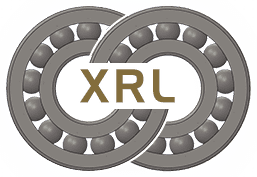The bearing consists of inner and outer rings, rolling elements (balls, rollers or needles) and retainers. Except for the retainer, the rest consists of bearing steel. When the bearing is working, the bearing, the outer ring and the bearing rolling body are subjected to high frequency and variable stress. The working conditions of the bearings are very complicated. The load concentrates on a small area of the rolling body. Theoretically, for the ball, it acts on one point; for the roller, it acts on a line, and the contact area between the rolling element and the ferrule is also small (point/line contact), so when the bearing parts are working, The surface area of the rolling element and the ferrule is subjected to a large pressure, generally up to 1500-5000 N/mm2; when the bearing rotates, it also has to withstand the centrifugal force, and the force increases with the increase of the rotational speed; the rolling elements and the sleeve There is not only rolling but also sliding between the rings, so there is friction between the rolling elements and the ferrule. Under the combined action of the above several forces, the fatigue crack is first generated on the surface of the ferrule or the rolling body with low fatigue strength, and finally the fatigue peeling is formed, so that the bearing breaks the loss effect. The normal damage form of the bearing is contact fatigue damage, and plastic deformation, indentation, wear, cracks, etc. are common.
Bearing life and reliability are related to bearing design, manufacturing, lubrication conditions, installation, maintenance and other factors, but the high quality and reliability of bearing materials is the key. Rolling bearing parts work under high-speed and long-term conditions under complex stress states such as tensile, compressive, bending, shearing, alternating, and high stress values. Therefore, the requirements for rolling bearings are:
1) high resistance to plastic deformation,
2) high anti-friction and wear properties,
3) High rotation accuracy and dimensional accuracy,
4) good dimensional stability,
5) Long service life and high reliability.
For bearings operating under special conditions, there are special requirements such as high temperature resistance, low temperature resistance, corrosion resistance and diamagnetic resistance, etc.
Post time: Jun-25-2021
